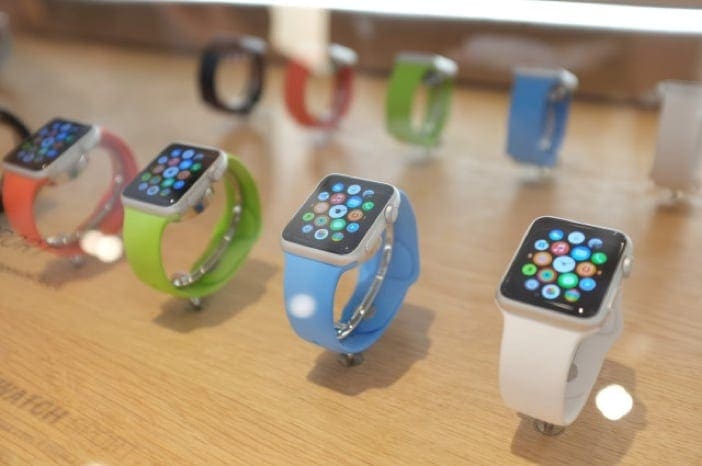Apple Watch sales are down 55% year over year according to the latest report published by IDC yesterday. These new projections come at a time when Apple is ready to report its earnings for the quarter on July 26th. There is no denying the fact that these sales numbers are very discouraging, given the momentum that the Wearable category has been generating in the past few years. We do think that the current numbers are a reflection of the product cycle we are in and should be discounted to a large extent for the following reasons:

First, Apple Watch has not been refreshed in more than a year. Most current owners still wear the first generation product and have to put with annoyances that are typical of any new product when introduced. There has been speculation about Apple introducing a new Apple Watch for quite some time now. Given these speculations, it is hard to imagine new customers buying the old model. This in itself will drive down any potential sales of the existing product.
Second, Apple has made quite a few course corrections related to this wearable product over the last year, some of which are really significant and give us a sense of direction as to where Apple is headed with this product category. One of the significant course corrections happened when Apple ruled that all third party watch app developers will need to support native apps by June 1. This direction came in April 2016.
With watchOS 2, Apple introduced native app support for the Apple Watch. This meant that apps would now be able to run on your watch without relying extensively on the iPhone. This has gone a long way to mitigate one of the major complaints around the product use, which is slow response and sluggishness of apps on the watch.
Third, Apple dazzled its audience when it showcased some of the watchOS 3 features at its WWDC event last month. The primary feature being the speed at which apps were able to load onto the Apple Watch. The use of in-memory apps technology in the new watchOS 3 has further mitigated the risks around slow response in user experience. This could however lead to battery problems for existing Apple Watch owners when they switch to watchOS3 on their device implying that more users may choose to upgrade to the new Watch 2.0 when it is released, provided Apple Watch 2.0 is able to tackle all these current headaches.
Apple has also found a way to integrate the watch into its overall ecosystem. Demonstrating the ability of the Apple Watch to unlock your Macbook is a classic example of this. This will reduce the time it takes to sign-on to your Mac and allows an offering for current Macbook owners to contemplate buying an Apple watch in the future.
For users that have come to love the customer experience of Apple Watch and the features and convenience that the product affords, they will not shy away from upgrading to the new Apple Watch when it is released. With more integration of Apple Watch to other existing Apple Products, Apple is going to make a solid case why its consumers should own an Apple Watch.
Based on the new features announced with watchOS 3, it can be clearly inferred that the new Apple Watch is expected to sport a faster processor than the current S1 as well as a new chip that will help the product to operate without continuously depending on an iPhone perhaps via a SIM that offers cellular connectivity.

If Apple can make these improvements to the new Apple Watch along with better battery performance, it is bound to generate huge momentum in sales.
Given the current shortcomings in Apple Watch user experience, it still commands a respectable position in the industry.
According to the IDC report’s data global smartwatch shipments in Q2 were 3.5M vs. 5.1M Y/Y with Apple contributing 1.6M (-55% Y/Y) and Samsung (SSNLF) 0.6M (+51% Y/Y) to that number. Lenovo (+75%) and LG Electronics (+26%) each shipped 0.3M and the remaining shipments were contributed by Garmin (+25%) and other undisclosed companies.
One would have hoped that since Samsung made product improvements to its watch, it’s sales numbers would have blown past that of Apple. Not Quite from the numbers that we see here. Only 0.6M for Samsung compared with 1.6M for Apple.
With rumors suggesting the release of the new Apple Watch 2.0 by this fall, We can definitely expect a Merry Christmas for current Apple Watch Fans as well as consumers that have been waiting on the sidelines for a while now.